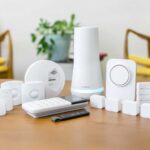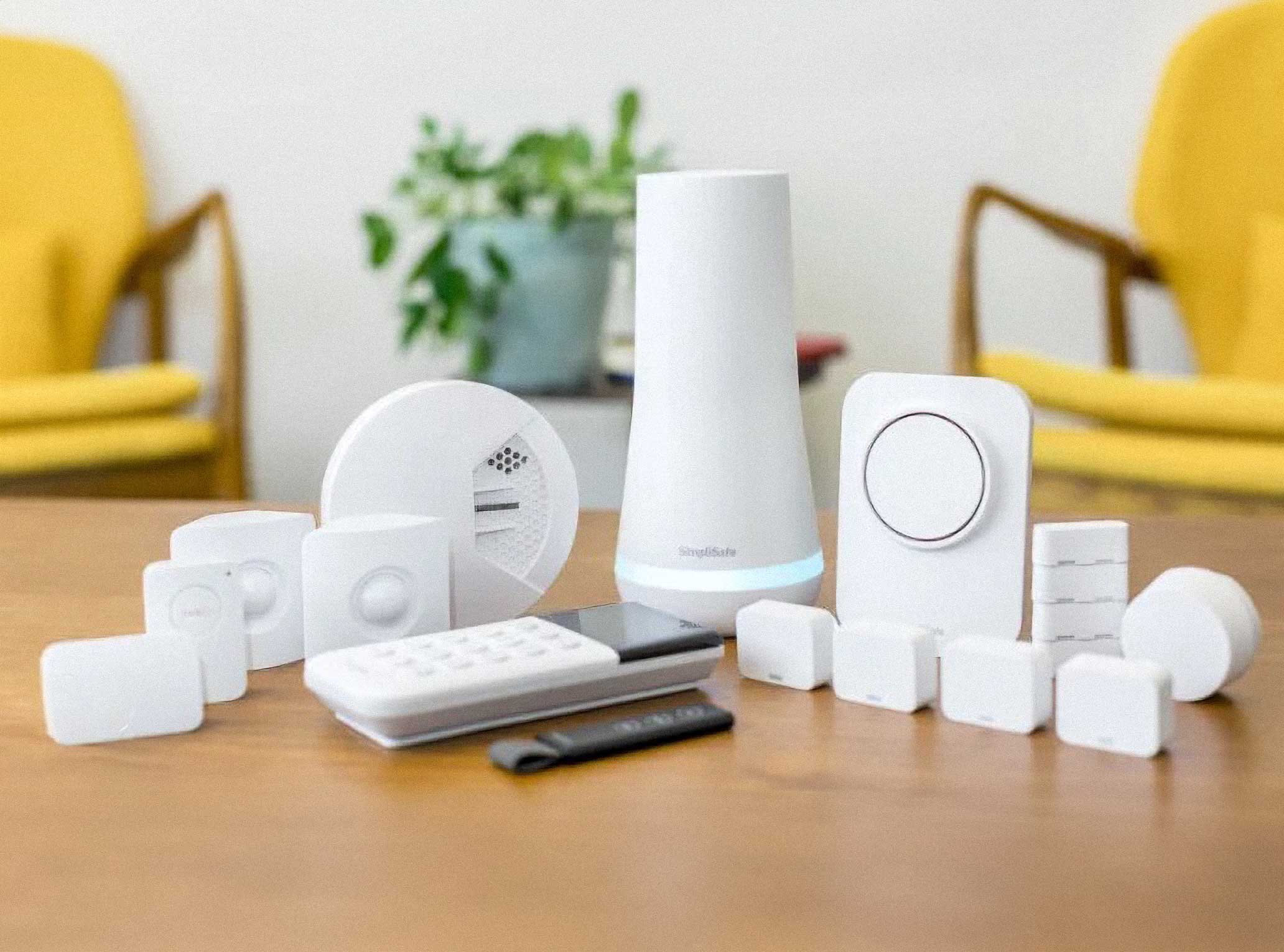Your cart is currently empty!
Smart devices are revolutionizing the way we interact with our homes, making it easier to automate daily routines and create a more efficient, comfortable living environment. Whether it’s turning on the lights, adjusting the thermostat, or brewing your morning coffee, automation allows you to streamline mundane tasks, saving time and energy. In this guide, we’ll explore how to use smart home technology to automate your daily routines and enhance your overall living experience.
1. Why Automate Your Home?
Home automation is about using technology to perform repetitive tasks for you, providing convenience and efficiency. By automating your daily routines, you can:
- Save Time: Eliminate small but time-consuming tasks like adjusting the thermostat, turning on lights, or even managing your home security.
- Increase Comfort: Automate temperature settings, lighting, and entertainment systems to suit your preferences without manual input.
- Enhance Security: Set your home’s security systems to arm automatically when you leave, and monitor activity in real-time from anywhere.
- Save Energy: Smart devices can optimize energy use by turning off when not needed, reducing electricity consumption.
Automation is particularly useful for busy individuals, parents, and anyone looking to simplify their daily life.
2. Getting Started with Home Automation
Before diving into automating specific routines, it’s important to set up the foundation for your smart home. Here are a few key steps to get started:
1. Choose a Smart Home Ecosystem
Select a smart home ecosystem that works best for you, such as Amazon Alexa, Google Assistant, or Apple HomeKit. Each system offers similar features but may differ in compatibility with certain devices or ecosystems. Choosing one helps streamline the process and allows all devices to work seamlessly together.
2. Invest in a Smart Hub or Smart Speaker
A smart hub or smart speaker serves as the central controller for all your devices. Amazon Echo, Google Nest Hub, or Apple HomePod are popular options that can connect with various smart gadgets. These devices allow you to control everything via voice commands or apps.
3. Install Smart Devices
To create an automated home, you’ll need compatible smart devices such as lights, plugs, thermostats, and security systems. Some popular devices include:
- Smart lights (Philips Hue, LIFX)
- Smart plugs (TP-Link, Wemo)
- Smart thermostats (Nest, Ecobee)
- Smart locks (August, Schlage)
- Smart security cameras (Ring, Arlo)
Once installed, these devices can be controlled via apps or voice commands and are essential for building automated routines.
3. Popular Automated Routines for Daily Life
Automating your home can make daily routines more efficient. Below are some of the most useful automation ideas that can streamline everyday activities.
Morning Routine: Wake Up with Ease
Imagine starting your day with your lights gradually brightening, your thermostat adjusting the temperature, and your coffee brewing—all without lifting a finger. You can automate your morning routine to ensure a smooth start to your day.
- Wake-Up Lights: Set your smart lights to gradually brighten in the morning to mimic a sunrise, gently waking you up.
- Example: Use Philips Hue lights to brighten 10 minutes before your alarm.
- Thermostat Adjustment: Have your smart thermostat adjust the temperature before you get out of bed to ensure your home is cozy.
- Example: Use Nest to set the temperature to 22°C as part of your “Good Morning” routine.
- Automated Coffee Maker: If you have a smart plug connected to your coffee machine, you can schedule it to turn on as soon as you wake up.
- Example: Use Wemo Smart Plug to power your coffee maker at 7:00 AM daily.
Leaving Home: A Seamless Exit
Leaving home in a hurry? Automating tasks when you leave ensures everything is secure, lights are off, and the house is energy-efficient.
- Smart Lock Automation: Automatically lock your doors when you leave and receive notifications if anything is left unlocked.
- Example: Use August Smart Lock to automatically lock the door when you leave a geofenced area.
- Lighting and Power Off: Set all lights to turn off and unnecessary appliances to power down when you walk out the door.
- Example: Use Alexa or Google Assistant to trigger a “Leaving Home” routine that turns off lights, fans, and TV.
- Security System Activation: Automate your security system to arm when you leave. Some systems even adjust based on your phone’s GPS location.
- Example: Use Ring Alarm to arm automatically once you exit the house’s designated geofence area.
Arriving Home: Welcome Home Smartly
Set up an automation routine that greets you with a comfortable, welcoming environment when you get back from work or errands.
- Lights On: Program your smart lights to turn on when you arrive home, ensuring you don’t enter a dark house.
- Example: Use LIFX lights to turn on when your phone connects to your home Wi-Fi network.
- Thermostat Control: Adjust your home’s temperature just before you arrive so it’s comfortable when you walk in.
- Example: Use Ecobee to pre-cool or pre-heat the house when you’re five minutes away from home.
- Music or TV: Have your voice assistant start playing music or turn on the TV when you walk in the door.
- Example: Ask Alexa to start playing your favorite playlist when the front door unlocks.
Evening Relaxation: Unwind Effortlessly
Automate your evening to create a relaxing environment without having to manually adjust anything.
- Dimming Lights: Set your smart lights to dim or shift to warmer tones as evening approaches to help you wind down.
- Example: Use Google Home to activate a “Relax” routine that dims the lights at sunset.
- TV or Media Control: Automate your entertainment system to turn on your favorite show or playlist in the evening.
- Example: Use Logitech Harmony Hub to automate your TV and sound system for movie night.
- Smart Blinds: Have your blinds close automatically at night to ensure privacy and block out unwanted light.
- Example: Use IKEA Fyrtur Blinds to close at 9:00 PM automatically.
Bedtime Routine: Simplify Nighttime Preparation
Create a “Good Night” routine that powers down your home and gets everything ready for a restful sleep.
- Lights Off: Ensure all your home’s lights turn off at a set time, or trigger them with a voice command when you’re ready for bed.
- Example: Ask Siri to turn off all the lights when you say, “Good night.”
- Security Check: Have your smart home security system arm itself automatically and send a notification confirming that all windows and doors are secure.
- Example: Use Ring Alarm to ensure everything is locked and secured before bed.
- Thermostat Adjustment: Automatically lower your thermostat’s temperature at night for optimal sleep conditions.
- Example: Program Nest to reduce the temperature by a few degrees at 10:30 PM.
4. Advanced Automation: Combining Devices and Triggers
Once you’re comfortable with basic automation routines, you can explore more advanced scenarios by combining devices and triggers for personalized experiences.
- Multi-Step Routines: Set up more complex routines that involve several devices. For example, you can create a “Movie Night” routine that dims the lights, turns on the TV, and adjusts the thermostat all with a single command.
- Conditional Automations: Use triggers like motion detection or time-based conditions to execute specific actions. For instance, if a motion sensor detects activity at the front door after 9 PM, you can program your smart security camera to start recording automatically.
- Geofencing: Set up location-based automations where your smart home reacts based on your proximity. For instance, you can use your phone’s GPS to trigger automations when you enter or leave a certain radius from your home.
5. Troubleshooting Common Automation Issues
While automation can greatly simplify your life, it’s not without its challenges. Here are some common issues and tips for resolving them:
- Devices Not Responding: Ensure all devices are connected to the same Wi-Fi network and are within range. Restart your smart hub or Wi-Fi router if connectivity issues persist.
- Delayed Responses: If automations are slow to respond, consider upgrading your Wi-Fi router or placing your smart devices closer to your hub for better connectivity.
- Conflicting Automations: If multiple routines conflict, prioritize or disable certain automations within your smart home app to avoid confusion.
Conclusion
Automating your daily routines with smart devices can significantly enhance convenience, comfort, and efficiency in your home. From setting up a smooth morning routine to creating an ideal bedtime environment, automation takes the hassle out of everyday tasks. As you grow more familiar with smart home technology, you can create increasingly personalized and advanced automation routines that cater to your unique lifestyle needs. With the right setup, your home can truly start working for you.



Leave a Reply